A sideblog for all the cool marine science and ocean life stuff that I find. My main blog is here: https://a-rock-in-the-ground.tumblr.com/
Don't wanna be here? Send us removal request.
Text
Watch this Cirroteuthid octopus, filmed by EVNautilus at a depth of around 1,600 meters (5,250 feet), stretch its tentacles to form a huge balloon 💙 🐙
255 notes
·
View notes
Photo

Anemone Porcelain Crab, Neopetrolisthes maculatus, Exmouth, SG, WA, Australia
photograph by kjadiver | inaturalist CC
232 notes
·
View notes
Text
Tomopterids, the ethereal glow worms of the deep 💡🐛

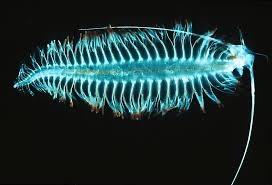


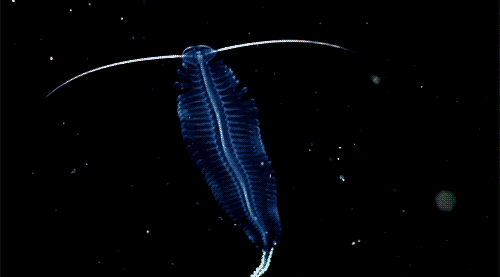

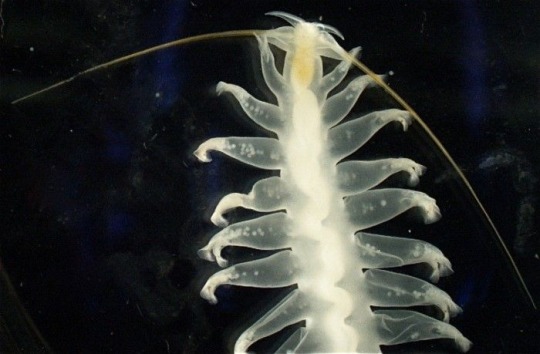
Tomopterids are marine planktonic polychaetes—commonly known as Gossamer Worms — that swim in the water column, never touching the seafloor. Growing anywhere between 1 cm and 30 cm long. They are also one of the very few marine creatures that can produce yellow light, spewing their bioluminescence to scare off predators
Love to sea it 🌊
1K notes
·
View notes
Text
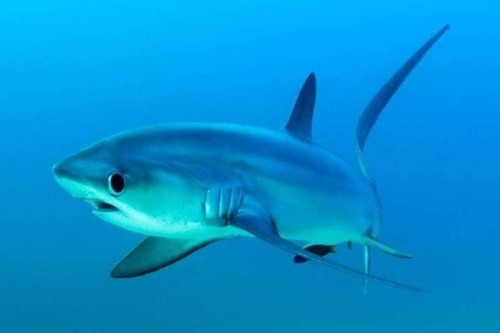
Anyone who suffers from anxiety has probably made facial expression to this before. This delightful specimen is the thresher shark (Alopias vulpinus) and is also known as the fox shark or whiptail shark. This species reaches lengths of 2.5-7.6 m, although half of this measurement is accounted for by the caudal (tail) fin. This extreme adaptation is imperative to the threshers peculiar hunting strategy, as they are believed to deliver blows from the whip-like tail in order to stun schooling fish and squid.
30 notes
·
View notes
Text
Magnapinna squid lovers i have good news
during a dive last year, the wonderful people at NOAA got footage of an adult bigfin! This was found at 2,385 meters in depth near the Ridge feature off the west Florida escarpment.

full credit, videos and photos can be found in the hyperlink!
513 notes
·
View notes
Text
This shows how small schooling fish try to avoid predators!
By mirroring the movements of the fish around it, these individuals create a mesmerising effect, making it much harder to pick out a target.
Safety in numbers!
Filmed in the El Toro marine protected area (Balearic Islands) in September.
By Save the Med Foundation.
151 notes
·
View notes
Photo
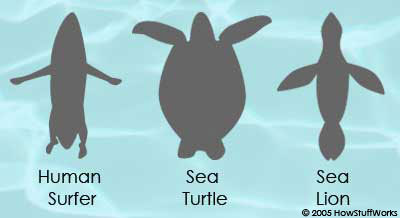

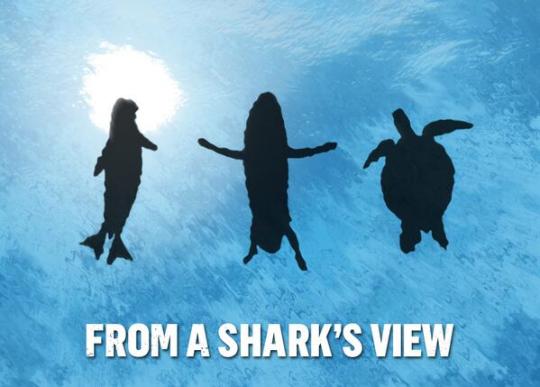

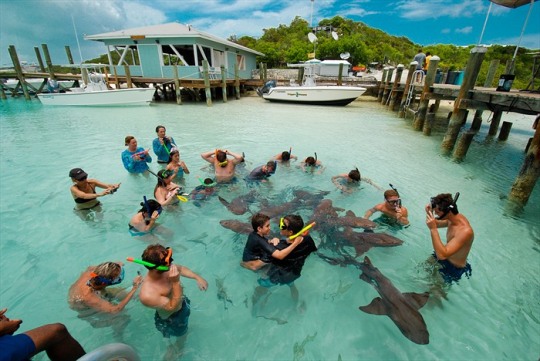

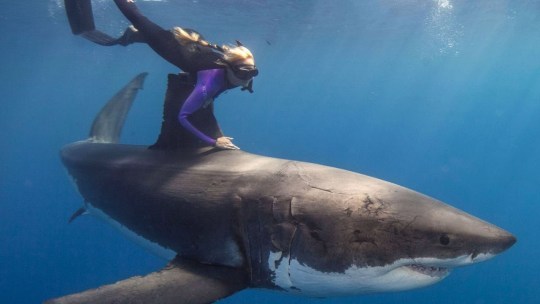
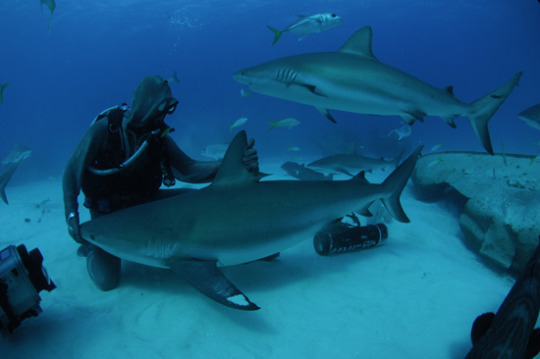
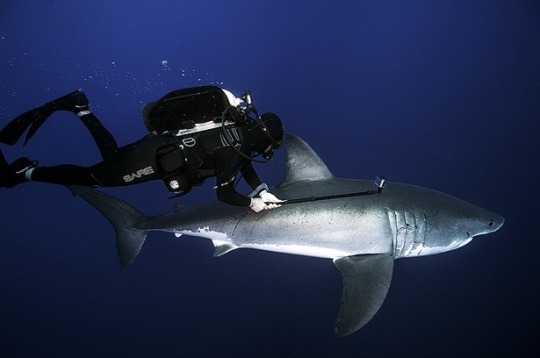
🌊🏊Sharks are nice!🏄
Since its summertime and people are gonna be hitting the beach to swim and/or surf, i decided to make this informative shark post. In the media sharks are portrayed as mean bloodthirsty and vicious creatures. Such as in movies like “The Shallows” and “Jaws”. But are sharks really that vicious? The answer is no. No they are not. Sharks are really nice and sweet creatures. I am a surfer and have been bitten a couple of times by sharks but i still know the truth… sharks aren’t evil creatures. You may be thinking “but you’ve been bitten by one! How can they not be evil!?” Well the answer to that my bro is simple, its all a misunderstanding. You see, sharks dont have great eyesight. They are blind as fuck. So they rely on other senses to find food. They see the silhouette of us surfers on our boards and they see it from a below angle and they think we kind look like seals, their favourite meal (as seen in the pics above). So they take just a nibble to see what the fuck we are. Once they realize we aint a seal, they go away. Why? Sharks HATE the taste of human meat. We disgusting af to them. Thats why the majority of shark attacks are just sharks bitting once and then leaving. They just wanted to know what the fuck we are bro. Its a case of mistaken identity. A misunderstanding. Have there been shark attacks where the shark bites more than once? Yeah. But thats rare and it only happens if the shark is either (1) feeling threatened or provoked. Or (2) very hungry. Like, i mean STARVING.
Sharks just wanna eat but they dont wanna eat us. Its just a simple misunderstanding. As you can see in the photos above, people can swim with sharks and nothing happens. Its totally fine my dudes. So there you have it, sharks are homies, not hostile.
Sources: Jaws- https://en.m.wikipedia.org/wiki/Jaws_(film)
The Shallows- https://en.m.wikipedia.org/wiki/The_Shallows_(film)
http://adventure.howstuffworks.com/shark-attack.htm
MORE INFO: The likelihood of being attacked by a shark is thought to be 1 in 11.5 million, and only 4 or 5 people in the entire world die each year from shark attacks.[1]. If you’re still nervous about meeting one of these ocean predators, check out these guidelines to help you further minimize the chances of an encounter- http://m.wikihow.com/Avoid-Sharks-While-Surfing
PLEASE REBLOG THANKS MATE
174K notes
·
View notes
Text
Rhinophores are a pair of sensors on the top of the head of seaslugs & marine gasteropods. They are scent or taste receptors. They detect scent by chemicals dissolved in the sea water. 🐌

62 notes
·
View notes
Text

Mimic ‘Wonderpus’ Octopus | Lembeh Straits, Indonesia
the mimic octopus has the amazing and almost instantaneous ability to change its color, skin texture, arrangement of the arms around the body, and style of movement in order to mimic other creatures.
For more, see: Splendiferous Sealife
81 notes
·
View notes
Video
Favorite moment of 2021: that one time we had a dance-off with a bunny-eared amphipod 🐰✨
Amphipods are often mistaken for tiny shrimp. They resemble shrimp in some ways, but are laterally compressed and have no carapace. They’re important food for many fishes, invertebrates, seabirds, and even marine mammals. Amphipods are mostly detritivores (eating decomposing plant and animal parts, as well as feces) and scavengers. Amphipods in the genus Scina, like the cutie jamming in this video clip, can emit their own light (bioluminescence). Researchers have recorded this light and found that it is among the shortest wavelengths of light produced by any known organism!
74 notes
·
View notes
Text
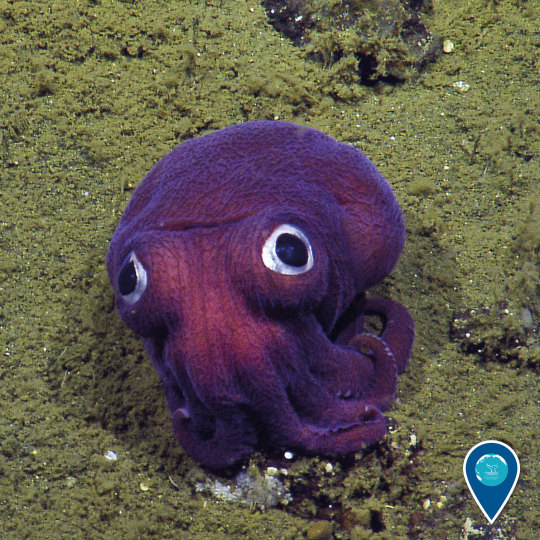
What better way to celebrate Squid/Cuttlefish Day than with a stubby squid?
In 2016, we teamed up with Nautilus Live to explore the deep ocean in and around Channel Islands National Marine Sanctuary, and spotted this little googly-eyed cephalopod! Though they look like a cross between an octopus and a squid, stubby squid are actually closely related to cuttlefish. They spend their lives on the seafloor, coating themselves in a mucus jacket and burrowing into the sediment. Leaving just those big eyes peeking above the surface, they remain buried until prey items like shrimp or small fish - or a curious ROV - pass by. (Photo: OET/NOAA. Image description: A bright purple stubby squid with large eyes on the seafloor.)
272 notes
·
View notes
Photo
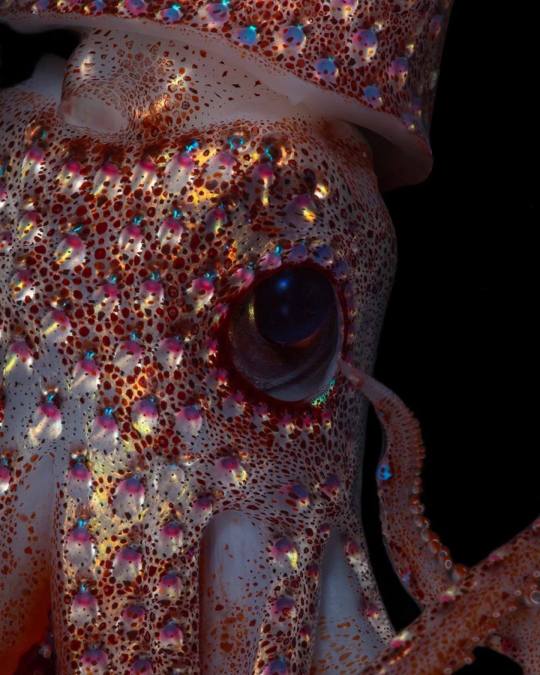
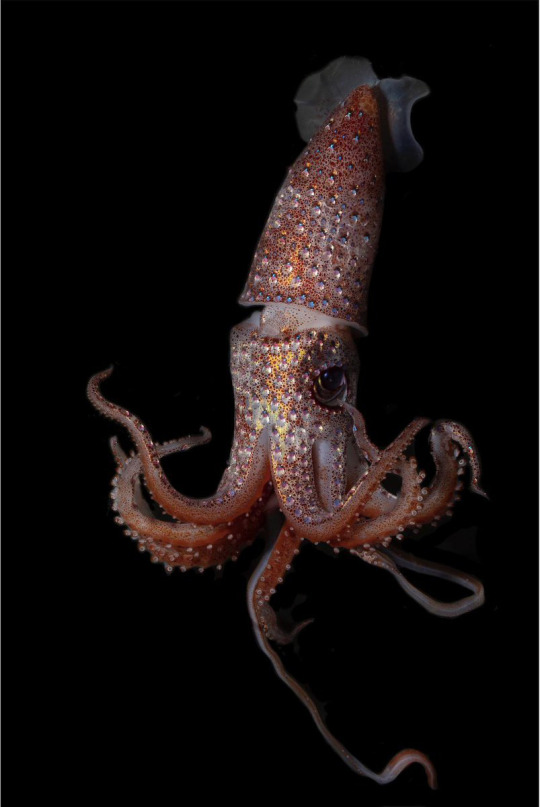
A large strawberry squid, one of three caught on the last trawl of the Deep-See cruise. Photo: NOAA Fisheries
“The strawberry squid, gets its nickname from the berry-like appearance of its bright-red body speckled with numerous jewel like luminescent photophores ” via @octonation
67K notes
·
View notes
Note
coral polyps: most metal sea organism?
FALSE. most metal sea organism is the Scaly-Foot Gastropod, a deep sea thermal vent snail that incorporates actual IRON into its shell and body armor!

godzilla could not crack these things open with a tire iron, their structural strength is so far off the charts that biologists had to invent a couple of new hardness levels just for them.

they're also sometimes called Sea Pangolins! because land pangolins are already widely known for being made out of solid metal, I guess.
18K notes
·
View notes
Text

Muh-muh-muh-ma-muh-muh-ma-muh-ma! Man(ta) Ray!
Today we are celebrating #WorldMantaDay! Manta rays are popular visitors to Flower Garden Banks National Marine Sanctuary and can reach 22 feet from fin-tip to fin-tip. Join us in the festivities by learning more about them: https://sanctuaries.noaa.gov/magazine/5/flower-garden-banks/. (Photo: Beata Lerman. Image description: A manta ray from above with two remoras on the back.)
107 notes
·
View notes




